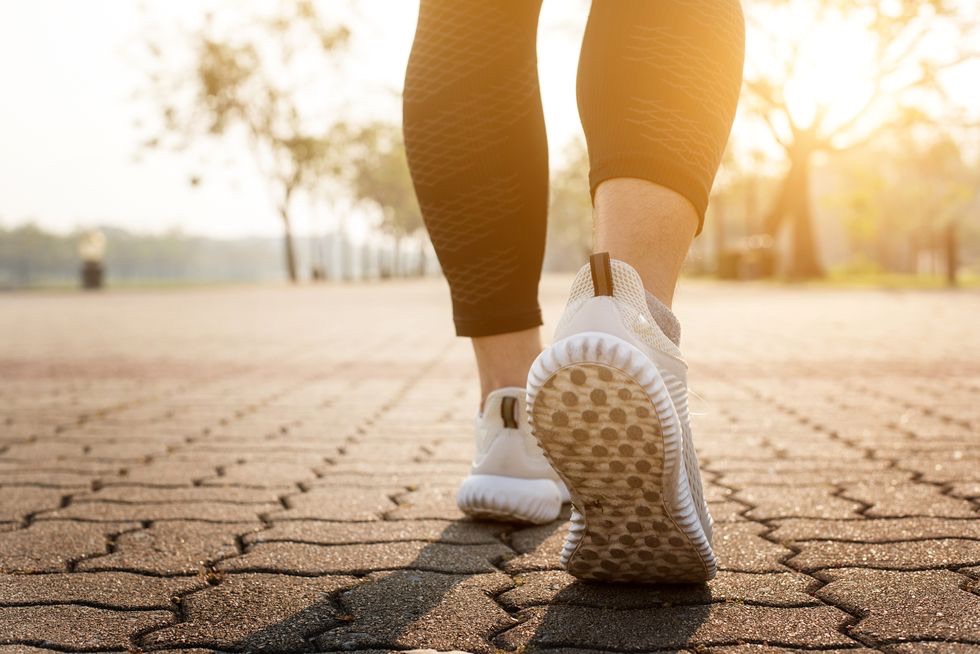A fitness specialist and walking instructor emphasizes the numerous health benefits of improving your walking technique. Walking enhances cognitive, mental, musculoskeletal, and overall physical health.
Walking is an adaptable activity that fits into our lifestyle at any age or stage, including new parenthood, menopause, busy work schedules, or retirement. It stands out as a comprehensive exercise that nourishes the whole body. My personal experience with walking began after experiencing retrocecal appendicitis during pregnancy, which led to abdominal surgery and the risk of scar tissue affecting my posture, joints, and back. As a sports scientist, I was aware of these risks and chose walking as a proactive measure, resulting in significant improvements to my physical and mental well-being.
1. It raises your heart rate and increases your breathing
Walking offers the benefits of moderate-intensity aerobic exercise without the joint stress of running or jogging.
Regular walking can improve cardiovascular health and lower your resting heart rate. It also enhances the efficiency of the circulatory system, which includes the network of arteries and veins that distribute blood throughout the body.
To help control your blood sugar, consider taking a walk after meals. After eating, our blood glucose levels rise, prompting the pancreas to release insulin to lower it. A short walk, even just five minutes, can effectively reduce this blood glucose spike.
Maintaining a brisk walking pace is crucial. While all physical activity is beneficial, aiming for 100 to 130 steps per minute provides optimal health benefits. Research indicates that walking at 125 steps per minute offers advantages similar to a mild jog without the joint strain. Traditionally, we have focused on step count, driven by the simple goal of 10,000 steps a day.
However, recent studies suggest that individuals under 60 should aim for 8,000 to 10,000 steps, and those over 60 should target 6,000 to 8,000 steps to lower their risk of early mortality. This goal is more achievable and motivating.
2. It improves your bone density
When I initiated WalkActive at 39, eighteen years ago, as a self-rehabilitation method post-surgery, I discovered it was also beneficial for enhancing the health of my bones and joints. Proper walking form activates the posterior chain muscles, including the glutes, hamstrings, and calves. This muscle activity exerts a slight tension on the bones, stimulating them to generate osteoblasts (the cells responsible for bone growth and strength), which boosts bone density and lowers the risk of osteoporosis and fractures.
3. You really can walk yourself happier and healthier
Research shows that short periods of walking can boost our mood. This improvement might result from activating the parasympathetic nervous system, which calms the body during stress, and stimulating the amygdala, which regulates emotions. Together, these effects help manage stress in the body.
Walking near water bodies such as rivers, coasts, waterfalls, or even in the rain exposes you to negative ions in the air. These charged particles, created by natural elements like sunlight and water, are associated with better mental health and lower blood pressure. To promote a quicker walking pace, studies have found a connection between walking at a rhythm of 120 beats per minute and enhanced feelings of wellbeing, often described as euphoric.
Additionally, spending time outdoors can help balance cortisol levels. For stress relief, envision pressing a problem into the ground with each step, as if it were under the sole of your foot.
4. Burns calories
Walking, no matter the distance or pace, burns calories and can therefore help with weight management. Even a brief morning walk may help regulate hunger levels for the rest of the day.
5. Improves insulin control
Research indicates that walking after a meal can help control blood sugar levels and reduce the buildup of abdominal fat. This type of fat is linked to metabolic disorders such as heart disease, diabetes, and liver problems. The reason is that physical activity improves the body’s sensitivity to insulin, which is crucial for regulating blood sugar.
6. May slow biological aging
Researchers at the University of Leicester have found a direct connection between walking pace and telomere length. Telomeres are the protective caps on our DNA that indicate how well we are aging. The study suggests that a lifetime of walking at a brisk pace may increase lifespan by 16-20 years. Additionally, the research indicates that the more overall walking a person does, measured by step count, the lower their risk of premature death from any cause.
